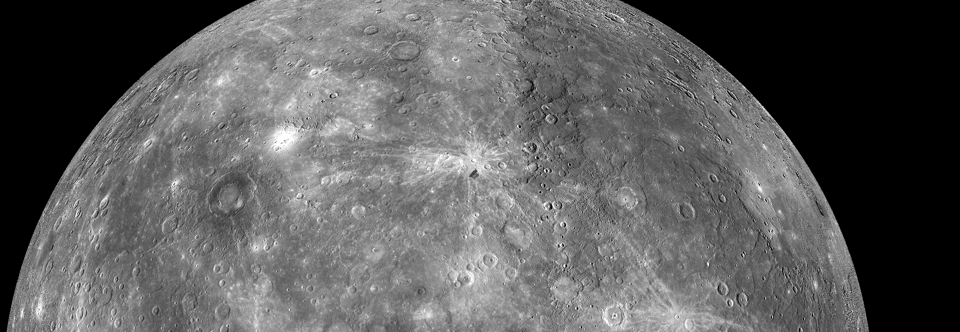Ice Filled Crater on Mars
Volcanic Plume on Io viewed against Jupiter
Cracked ice on Europa caused by tidal flexing from Jupiter
 The surface of Jupiter’s satellite Europa, the second large moon from the planet, is cracked. Reflection spectra show that the surface material is mostly clean ice, while images show very few impact craters, indicating that the surface is young. In addition, several lines of evidence show that Europa possesses a subsurface ocean of liquid water (the best evidence, from induced currents that flow in Europa as it cuts through Jupiter’s magnetosphere, was discovered by UCLA scientists B. Khurana and M. Kivelson). Together, the known properties suggest that the surface is a bit like the arctic polar cap of the Earth, with ice sheets floating on water and stress-cracked into polygonal platelets that sometimes collide and may even overturn. The global scale cracks in the picture are a few kilometers wide and a few 100 meters deep, and spectrally distinguished from their surroundings by entrained salts and other materials presumably oozed up from below. These large-scale cracks form patterns dictated by global stresses, caused by planetary perturbations as Europa orbits Jupiter. Smaller scale cracks and other morphological features indicate that Europa’s ice shell may be as thin as 3 km, in places.
The surface of Jupiter’s satellite Europa, the second large moon from the planet, is cracked. Reflection spectra show that the surface material is mostly clean ice, while images show very few impact craters, indicating that the surface is young. In addition, several lines of evidence show that Europa possesses a subsurface ocean of liquid water (the best evidence, from induced currents that flow in Europa as it cuts through Jupiter’s magnetosphere, was discovered by UCLA scientists B. Khurana and M. Kivelson). Together, the known properties suggest that the surface is a bit like the arctic polar cap of the Earth, with ice sheets floating on water and stress-cracked into polygonal platelets that sometimes collide and may even overturn. The global scale cracks in the picture are a few kilometers wide and a few 100 meters deep, and spectrally distinguished from their surroundings by entrained salts and other materials presumably oozed up from below. These large-scale cracks form patterns dictated by global stresses, caused by planetary perturbations as Europa orbits Jupiter. Smaller scale cracks and other morphological features indicate that Europa’s ice shell may be as thin as 3 km, in places.



